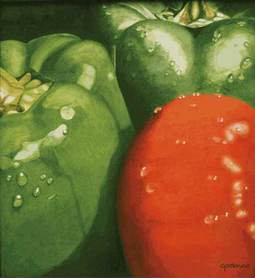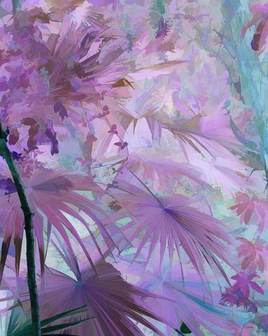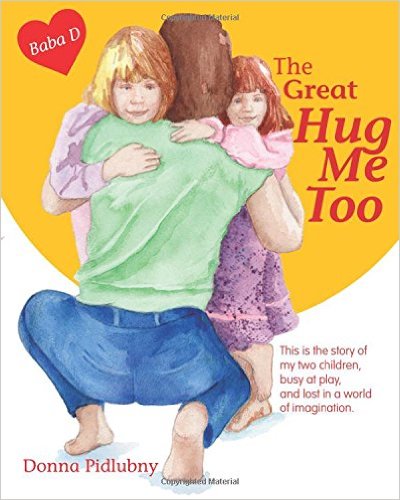| Abstract Abstraction indicates a departure from reality in the depiction. It can be a slight departure, partial or complete. Artwork which takes liberties with color or form can be considered partially abstract. Total abstraction bears no trace of any reference to anything recognizable. Abstract Expressionism Abstract Expressionism is commonly called Action Painting or Color Field Painting, and The New York School. It exploded onto the art scene after World War II with its characteristic messiness and extremely energetic applications of paint. To the contemporary audience, it hardly seemed worthy of the name "art", but that's what the critics said about Impressionism too. Expressionist The artist tries to express certain feelings about something. The artists that painted in this style were more concerned with having their paintings express a feeling than in making the painting look exactly like what they were painting. Impressionism A group of independent artists in 1874, organized an exhibition in Paris that launched the movement called Impressionism. Despite their diverse approaches to painting, appeared to contemporaries as a group. Conservative critics wrote that their work was unfinished, and sketch like appearance. The work was thought to capture a moment, like one might see if only viewing something for a second or two. Cubism A modern art style made up mostly of paintings. The paintings are not supposed to look real. The artist uses geometric shapes to show what he is trying to paint. Early cubists used mainly grays, browns, greens, and yellows. After 1914, Cubists started to use brighter colors. Cubism was the beginning of the Abstract and Non-objective art styles. Fauvism Fauvism was an art style that lasted only four years, beginning in 1905. The word Fauvism is french for "wild beasts". It got this name because the paintings had bright and unusual colors. The subjects in the paintings were shown in a simple way, and the colors and patterns were bright and wild. Pointillism The artist uses small dots to make up the pictures. From far away, these dots blend together to form the picture and give the impression of different colors as they blend together. Pop Art Pop art can be any every day item that is drawn in a colorful way, taking every day subjects, making them the focus of an art work. It is inspired by comic strips, advertising, and popular entertainment. Post Impressionism Beginning in the 19th century, it was mainly still life and landscape paintings. The post impressionists liked to use lots of colors and shadows. Primitive Art Primitive Art looks like art that is done by a child. Usually the picture is painted very simply, and the subjects are "flat" or two-dimensional. This is a style and not a time period, like modern art.  A Realism and Still Life Painting by Gordonna Title: Green Peppers and Tomato Realism This style of art that shows things exactly as they appear in life. It began in the 18th century, but the greatest Realist era was in the mid-19th century. Most Realists were from France, but there were some famous American painters who were Realists also. High Realism or Ultra Realism This style of art shows things exactly as they appear in life, but also shows more than a viewer would normally see. Extremely detailed, and beyond realism. The movement started in the 1960's with the onset of photorealism, and has now evolved into Hyperrealism which began in the early 2000's. Surrealist Art In this style paintings were generally based on dreams. Their paintings were filled with familiar objects which were painted to look strange or mysterious. They hoped their odd paintings would make people look at things in a different way and change the way they felt about things. They thought that their paintings might stir up feelings in the back of peoples minds. Trompe l'oeil French for "deceive the eye" is an art technique involving realistic imagery in order to create the optical illusion that the depicted objects exist in three dimensions. Trompe l'oeil, is also used in contemporary interior design, where illusionary wall paintings experienced a Renaissance since around 1980. Aboriginal Art Is a term applied to North American Native Art and Indigenous Australian art and is art made by the Indigenous peoples of both countries. The styles in North America vary widely, depending on the origin or location. You will see terms like Haida art and Woodlands art. The traditional art is very stylized and graphical in nature. Illustration An illustration can be a drawing, painting, photograph, or other image that is created to help depict a story. A colorful visual aid in a sea of grey on the printed page, are made in a variety of ways, and styles, and can be seen in publishing, in advertising, and on the web. Graphic Arts Graphics are visual presentations on some surface, such as a wall, canvas, screen, paper, or stone to brand, inform, illustrate, or entertain. Graphics word is derived from the word graph. An image that is generated by a computer called graphics, is a pictorial representation and manipulation of data, as used in computer-aided design and manufacture, in typesetting and the graphic arts, and in educational and recreational programs. |

Decorative Art by Dan Merritt
Title: Fairyland #2
Decorative Art
The decorative arts is traditionally a term for the design and manufacture of functional objects. The decorative arts are often categorized in opposition to the "fine arts", namely, painting, drawing, photography, and large-scale sculpture, which generally have no function other than to be seen. In recent times it also refers to art that is a decorative element for interior design. Paintings are generally picked for colors and subject, but not the concept.
Still Life Painting
A still life is a work of art depicting mostly inanimate subject matter, which may be either natural such as food, flowers, plants, rocks, or shells or man-made drinking glasses, books, and vases. Still life paintings give the artist more leeway in the arrangement of design elements within a composition than do paintings of other
types of subjects such as landscape or portraiture. Some modern still life breaks the two-dimensional barrier and employs three-dimensional mixed media, and uses found objects, photography, computer graphics, as well as video and sound.
Figure Painting
A figure painting is a work of fine art in any painting media with the primary subject being the human figure. The human figure has been one of the constant subjects of art since the first stone age cave paintings, and has been reinterpreted in various styles throughout history.
For more information.
Title: Fairyland #2
Decorative Art
The decorative arts is traditionally a term for the design and manufacture of functional objects. The decorative arts are often categorized in opposition to the "fine arts", namely, painting, drawing, photography, and large-scale sculpture, which generally have no function other than to be seen. In recent times it also refers to art that is a decorative element for interior design. Paintings are generally picked for colors and subject, but not the concept.
Still Life Painting
A still life is a work of art depicting mostly inanimate subject matter, which may be either natural such as food, flowers, plants, rocks, or shells or man-made drinking glasses, books, and vases. Still life paintings give the artist more leeway in the arrangement of design elements within a composition than do paintings of other
types of subjects such as landscape or portraiture. Some modern still life breaks the two-dimensional barrier and employs three-dimensional mixed media, and uses found objects, photography, computer graphics, as well as video and sound.
Figure Painting
A figure painting is a work of fine art in any painting media with the primary subject being the human figure. The human figure has been one of the constant subjects of art since the first stone age cave paintings, and has been reinterpreted in various styles throughout history.
For more information.



 RSS Feed
RSS Feed